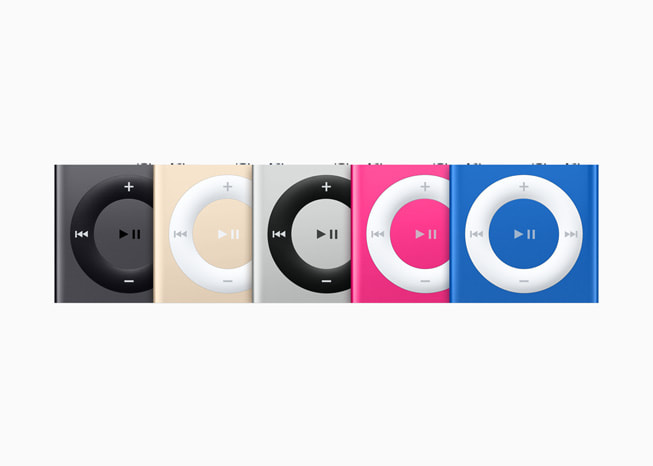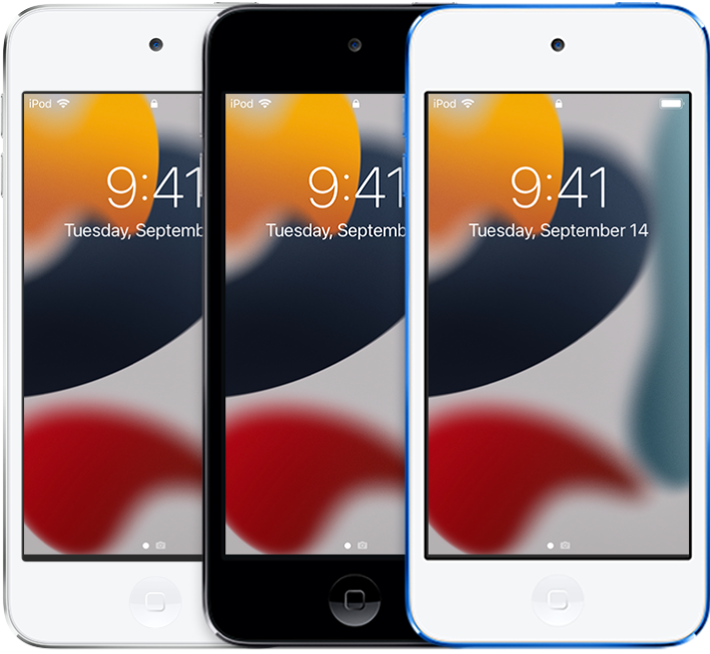In the annals of consumer technology, few devices command the same level of reverence as the Apple iPod. It didn’t just change how we listen to music; it fundamentally altered the music industry and set the stage for the smartphone revolution. Years after its official discontinuation, the iconic device lives on in the hearts of enthusiasts and in a burgeoning market for refurbished classics. But beyond mere nostalgia, a compelling technical and strategic argument is forming for an iPod revival news story that’s more than just a rumor. The modern tech landscape, with its focus on digital wellness, high-fidelity audio, and deeply integrated ecosystems, may have inadvertently created the perfect niche for a 21st-century iPod. This article explores the engineering, market, and strategic justifications for why Apple might resurrect a classic, not as a relic of the past, but as a forward-thinking solution for a modern audience.
Redefining the Niche: Why an iPod Makes Sense Now
The initial reaction to the idea of an iPod revival is often skepticism: “Doesn’t the iPhone already do all that?” While true on the surface, this view overlooks several powerful market trends and user needs that a dedicated media player is uniquely positioned to address. The case for a new iPod isn’t about replacing the iPhone’s functionality but complementing it by offering a focused, specialized experience that the all-in-one smartphone cannot.
The Digital Detox and the Rise of Focused Devices
One of the most significant cultural shifts in recent years is the growing awareness of digital overload. Constant notifications, the pressure of social media, and the “always-on” nature of smartphones are leading many users to seek “digital detox” solutions. A modern iPod, intentionally stripped of cellular connectivity and the associated barrage of alerts, could be the ultimate mindful technology product. Imagine a device dedicated purely to the enjoyment of music, podcasts, and audiobooks—a sanctuary from the digital noise. This aligns perfectly with Apple’s increasing focus on user well-being, a frequent topic in Apple health news and discussions around Screen Time features. For parents, a Wi-Fi-only iPod represents a safe and controlled entry point into the digital world for their children, offering access to Apple Arcade and educational apps without the complexities and dangers of a full-fledged smartphone.
The High-Fidelity Audio Renaissance
The music industry is undergoing a significant shift towards higher quality audio. With Apple Music now offering its entire catalog in Lossless and Spatial Audio formats, the hardware has become the new bottleneck for discerning listeners. While iPhones and AirPods deliver an excellent experience, a dedicated iPod could cater specifically to the audiophile market. This hypothetical device could incorporate a superior, high-performance Digital-to-Analog Converter (DAC) and a more powerful headphone amplifier than what’s feasible in the space-constrained chassis of an iPhone. This would unlock the full potential of Apple’s high-resolution audio library, appealing to a niche but passionate market currently served by brands like Astell&Kern. This also creates a stronger sales narrative for Apple’s premium audio products; the latest AirPods Max news could highlight its superior wired performance when paired with a Hi-Fi iPod.
A New Gateway to the Apple Ecosystem
Every major tech company’s long-term success hinges on attracting and retaining users within its ecosystem. A new, affordably priced iPod could serve as the most accessible entry point yet. Priced significantly lower than an iPhone or even an entry-level iPad, it could be the perfect first Apple device. This strategy hooks users into the ecosystem early, familiarizing them with iOS and, more importantly, with Apple’s services. A child who loves their iPod for Apple Music and Arcade is a future customer for an iPhone, a Mac, and an Apple Watch. This touches on the core of recent Apple ecosystem news, which emphasizes the symbiotic relationship between hardware sales and recurring service revenue.
Imagining the 21st-Century iPod: Form and Function

Speculating on a revived iPod invites a fascinating design exercise. Apple could pursue several distinct paths, each catering to a different user base but all deeply integrated with the current hardware and software lineup. A successful revival would depend on a thoughtful blend of modern technology and purposeful design.
Model 1: The “iPod Touch Pro”
The most straightforward approach would be to modernize the iPod Touch form factor. This device would essentially be an “iPhone without the phone,” but with a clear focus on media and entertainment.
- Processor: An A15 or A16 Bionic chip would provide ample power for demanding Apple Arcade games and ensure a fluid user experience for years, keeping it relevant through many future iOS updates news cycles.
- Display: A vibrant, edge-to-edge OLED display with ProMotion technology would make it a spectacular media consumption device, perfect for watching content from Apple TV+.
- Audio Hardware: The key differentiator. It would feature a dedicated high-end DAC and a robust headphone amplifier, along with a traditional 3.5mm headphone jack to appease audiophiles.
- Connectivity: Wi-Fi 6E and Bluetooth 5.3 would ensure a rock-solid connection to the latest accessories, from the HomePod mini news about its stereo pairing to the seamless connectivity celebrated in AirPods Pro news.
This model would be the ultimate gym companion, travel device, and kid-friendly gadget, all while upholding Apple’s high standards of performance and design.
Model 2: The “iPod Classic Hi-Fi”
A more daring approach would be to lean into nostalgia while serving the high-end audio market. This model would be a love letter to the original iPod’s design philosophy, updated with modern technology.
- Interface: Imagine the iconic click wheel reimagined as a solid-state, haptic-feedback touchpad. The interface would be non-touch, with a simple, elegant screen optimized purely for navigating a music library. This would be a device of purpose.
- Build: A premium, machined aluminum or titanium body, reminiscent of the original iPod Classic news that fans adored.
- Audio Purity: This device’s sole purpose would be audio reproduction. It would feature a best-in-class DAC, a powerful amplifier capable of driving high-impedance headphones, and both 3.5mm and balanced 4.4mm audio outputs. It would be the definitive hardware statement for Apple Music’s lossless ambitions.
Ecosystem Integration and Future-Forward Features
Regardless of the form factor, deep integration is key. A new iPod would naturally sync with a user’s entire Apple Music library via iCloud. It could act as a sophisticated remote for a HomePod or Apple TV, a concept often discussed in Apple TV marketing news. Looking further ahead, could it have a role in the spatial computing era? Perhaps a future iPod could function as a simplified controller or companion device for certain media experiences on Apple Vision Pro, an idea that aligns with speculative Vision Pro wand news. It could even leverage its sensors to become an entry-level device for creating AR content, a small window into the world of Apple AR news.
Beyond the Device: The iPod’s Role in Apple’s Grand Strategy
A new iPod wouldn’t just be a product; it would be a strategic asset. Its introduction would have ripple effects across Apple’s hardware, software, and services divisions, strengthening the company’s overall market position.
Diversifying Hardware and Anchoring Services

While iPhone news continues to dominate Apple’s earnings calls, the smartphone market is mature. An iPod revival offers a low-risk way to diversify hardware revenue by targeting specific, underserved niches. More importantly, the iPod acts as a Trojan horse for Apple’s lucrative services division. Each iPod sold is a potential new subscription for Apple Music, Apple Arcade, iCloud+, and Apple TV+. It reinforces the “moat” around the Apple ecosystem, making it more valuable and stickier for every user who enters.
A Hub for Health, Privacy, and Accessories
A modern iPod could become a central device for health and fitness enthusiasts. Lighter and less intrusive than an iPhone, it’s the perfect device to take on a run or to the gym, syncing workout data from a connected Apple Watch. It would inherit Apple’s industry-leading privacy and security features, a constant theme in Apple privacy news and iOS security news, making it a trusted device for personal data. Furthermore, it would stimulate the accessory market. Imagine a new line of cases, docks, and other Apple accessories news. It could even support a smaller version of the Apple Pencil for quick notes or sketches, expanding on the input methods seen in recent Apple Pencil Vision Pro news.
Navigating the Pitfalls: Is an iPod Revival a Guaranteed Hit?
Despite the compelling arguments, launching a new iPod is not without its challenges. Apple would need to navigate potential product cannibalization, pricing strategy, and market positioning with extreme care to ensure its success.
The Cannibalization Question
The most significant risk is that a new iPod Touch could cannibalize sales of the iPhone SE or the iPad mini. To avoid this common pitfall, Apple must be disciplined in its feature set and marketing. The key is differentiation. The lack of a cellular radio is the most obvious, but the marketing must focus on the benefits of this limitation: longer battery life, no monthly fees, and a distraction-free experience. The message should be about what the iPod *is*—a dedicated media and entertainment device—not what it *isn’t* (a phone).

Pricing and Positioning: A Delicate Balance
Pricing would be critical. An “iPod Touch Pro” would need to be priced low enough to not compete with the iPhone SE (perhaps in the $249-$349 range), while a high-end “iPod Classic Hi-Fi” could command a premium price ($599+) targeted at audiophiles who would otherwise spend that much or more on a competitor’s device. The marketing must be laser-focused, targeting specific use cases: the perfect first device for kids, the ultimate gym companion, or the definitive portable Hi-Fi player. This mirrors the focused strategy seen in recent iPad news, where different models are clearly aimed at different user segments.
Best Practices for a Successful Launch
For a revival to succeed, Apple should follow a clear playbook. First, the product must have a hero feature—a best-in-class DAC, for example. Second, the marketing must tell a compelling story about focus and digital wellness. Third, it must launch with strong support from the ecosystem, seamlessly integrating with everything from AirPods to the latest AirTag news for findability. By defining its purpose clearly, Apple can create a new market space rather than just fighting for scraps in an existing one.
Conclusion: The Enduring Beat of an Icon
The case for an iPod revival is a powerful blend of nostalgia and forward-thinking strategy. It’s an acknowledgment that in a world of do-everything devices, there is a growing desire for products that do one thing exceptionally well. A modern iPod could cater to the digital wellness movement, satisfy the demands of the high-fidelity audio market, and serve as a crucial, accessible gateway into Apple’s ever-expanding ecosystem. While navigating challenges like pricing and market positioning will be crucial, a thoughtfully engineered and clearly marketed iPod has the potential to carve out a meaningful and profitable niche. It would be a testament to Apple’s ability to not only innovate but also to recognize when a classic idea’s time has come again, proving that the beat of the iPod is far from over.











